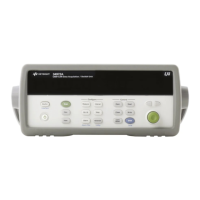7Tutorial
270 Keysight 34970A/34972A User’s Guide
Grounding Techniques
One purpose of grounding is to avoid ground loops and minimize noise. Most
systems should have at least three separate ground returns.
1 One ground for signals. You may also want to provide separate signal grounds
between high-level signals, low-level signals, and digital signals.
2 A second ground is used for noisy hardware such as relays, motors, and
high-power equipment.
3 A third ground is used for chassis, racks, and cabinets. The AC power ground
should generally be connected to this third ground.
In general, for frequencies below 1 MHz or for low-level signals, use single-point
grounding (see below). Parallel grounding is superior but is also more expensive
and more difficult to wire. If single-point grounding is adequate, the most critical
points (those with the lowest levels and/or the most precise measurement
requirements) should be positioned near the primary ground point. For
frequencies above 10 MHz, use the separate grounding system. For signals
between 1 MHz and 10 MHz, you can use a single-point system if the longest
ground return path is kept to less than 1/20 of a wavelength. In all cases,
return-path resistance and inductance should be minimized.
Circuit A Circuit B Circuit C Circuit A Circuit B Circuit C
Circuit A Circuit B Circuit C
Single-Point Ground
Separate Grounds
Parallel Ground s

